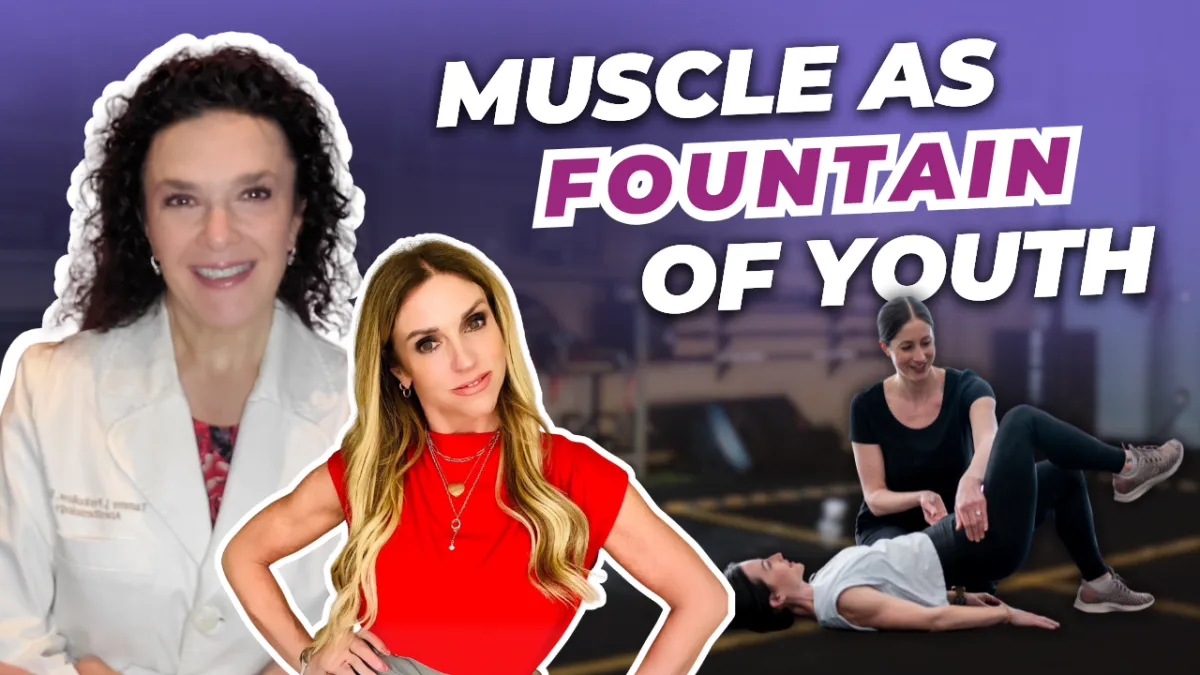
Pain-Free Movement & Bladder Control: The Power of Pelvic Health
What if the secret to living a longer, healthier, and more vibrant life isn’t just staying active, but building strength from the inside out?
In this podcast episode, we uncover how pelvic health, muscle building, and key lifestyle changes can unlock the fountain of youth and transform how you age. Dr. Patricia Wallace, a leading urogynecologist and fitness expert, shares actionable insights and groundbreaking strategies to help you thrive at any stage of life.
Don’t miss this eye-opening discussion. Tune in now and take the first step toward a stronger, healthier, and more vibrant you!
Episode Video
The Overlooked Role of Pelvic Health in Longevity
When people think about longevity, pelvic health isn’t often the first thing that comes to mind. Yet, it plays a crucial role in maintaining independence, mobility, and overall quality of life. The pelvic floor muscles, often overshadowed by more visible muscle groups, are vital for bladder and bowel control, sexual health, and core stability.
Dr. Wallace emphasizes that both men and women can benefit from focusing on pelvic health:
The core isn’t just your abs—it’s your back, glutes, and pelvic floor. Together, they create the stability you need for a strong and functional body.
She notes that men often overlook their pelvic floor health, only realizing its importance after a health issue such as prostate surgery. Similarly, women frequently ignore pelvic health until they experience challenges such as incontinence or discomfort. By focusing on pelvic health proactively, you can prevent these issues and support overall longevity.
Muscle Building at Every Age

For Those in Their 30s and 40s
Dr. Wallace emphasized the importance of building muscle early to prevent age-related loss, which can begin as early as our 30s. Her advice? Shift focus from long cardio sessions to resistance training. Learning proper body mechanics with the help of a professional—like a physical therapist or fitness coach—is crucial.
She also highlighted the need for postpartum women to prioritize pelvic floor therapy to restore strength and stability. “If you build a strong core and pelvic floor before and after childbirth, you lay the groundwork for lifelong health,” she noted.
For Seniors in Their 50s, 60s, and Beyond
While it’s more challenging to gain muscle as we age, consistency and targeted effort can still yield significant results. Incorporating weightlifting, focusing on core stability, and staying active are essential. Dr. Wallace recommends starting small, such as lifting weights to fatigue, and gradually increasing resistance.
The Role of Nutrition and Hormone Balance in Muscle Health
Dr. Wallace stressed that nutrition and hormones are integral to muscle building and longevity. Adequate protein intake is a must, with a target of at least 30 grams per meal. This supports muscle repair and growth. Starting your day with a protein-rich meal can also stabilize insulin levels, which supports metabolic health.
For women approaching or in menopause, hormone optimization is vital. Dr. Wallace highlighted how bioidentical hormone replacement therapy (BHRT) helps maintain muscle mass, supports bone density, and enhances overall vitality. Testosterone, often overlooked in women’s health, plays a significant role in building and preserving muscle.
The Hidden Link Between Muscle and Longevity
Preventing Age-Related Decline
Muscle health directly impacts the ability to live independently and avoid age-related issues such as falls, fractures, and even cognitive decline. Functional strength allows for an active lifestyle, enhancing not only physical health but also mental well-being.
Sexual Health and Muscle Strength
Dr. Wallace revealed that pelvic floor health isn’t just for women experiencing incontinence. A strong pelvic floor improves mobility, sexual function, and even posture. She explained, “Men and women alike benefit from a robust pelvic floor. For men, it supports erectile function, and for women, it’s essential for sexual health and continence.”
Lifestyle Strategies for Optimal Muscle Health
Building muscle isn’t just about lifting weights—it requires a holistic approach. Here are Dr. Wallace’s top tips:
Prioritize Sleep: Quality sleep is essential for muscle recovery and overall health.
Reduce Stress: Incorporate mindfulness practices such as yoga, journaling, or meditation.
Stay Consistent: Consistency in workouts, nutrition, and self-care routines is key.
Hydrate and Fuel Properly: Drink enough water and consume nutrient-dense foods.
Incorporate Movement: Even small daily activities, like using light weights during TV time, can add up.
About Dr. Patricia Wallace

Meet Dr. Patricia Wallace, a renowned expert in gynecology, urogynecology, and women’s wellness. With extensive experience in both surgical and non-surgical treatments, Dr. Wallace specializes in restoring pelvic health and addressing hormone balance, sexual wellness, and chronic pelvic conditions. Her integrative approach empowers women to live their best lives, no matter their age or health challenges, with a focus on comprehensive care for conditions like pelvic organ prolapse, incontinence, menopause, and more.
Dr. Wallace is on a mission to help patients of all ages live strong, vibrant lives. You can follow her on Instagram @DoctorTrishMD or visit her website at https://pelvichealthwellness.com/
Final Thoughts
Muscle health is a non-negotiable aspect of aging well. As Dr. Wallace and Dr. Penhollow emphasized, building and maintaining muscle is a lifelong commitment, but the benefits—independence, vitality, and prolonged quality of life—are well worth the effort.
For anyone looking to start their muscle-building journey, Dr. Wallace offered this advice:
Start where you are. Whether it’s lifting light weights, eating more protein, or seeking professional guidance, every small step adds up.
If you're ready to take control of your knee pain, click here to discover more about these five effective knee pain home treatments. With these simple steps, you can start your journey towards pain-free knees and a more active lifestyle.
